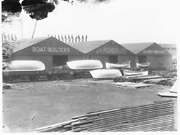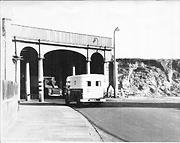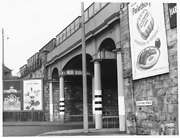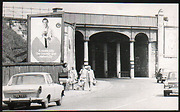 Hartlepool Sports & Leisure
Hartlepool Sports & Leisure
- Cinemas, Theatres & Dance Halls
- Musicians & Bands
- At the Seaside
- Parks & Gardens
- Caravans & Camping
- Sport
 Hartlepool Transport
Hartlepool Transport
- Airfields & Aircraft
- Railways
- Buses & Commercial Vehicles
- Cars & Motorbikes
- The Ferry
- Horse drawn vehicles
 A Potted History Of Hartlepool
A Potted History Of Hartlepool
- Unidentified images
- Sources of information
- Archaeology & Ancient History
- Local Government
- Printed Notices & Papers
- Aerial Photographs
- Events, Visitors & VIPs
 Hartlepool Trade & Industry
Hartlepool Trade & Industry
- Trade Fairs
- Local businesses
- Iron & Steel
- Shops & Shopping
- Fishing industry
- Farming & Rural Landscape
- Pubs, Clubs & Hotels
 Hartlepool Health & Education
Hartlepool Health & Education
- Schools & Colleges
- Hospitals & Workhouses
- Public Health & Utilities
- Ambulance Service
- Police Services
- Fire Services
 Hartlepool People
Hartlepool People
 Hartlepool Places
Hartlepool Places
 Hartlepool at War
Hartlepool at War
 Hartlepool Ships & Shipping
Hartlepool Ships & Shipping

Throston Bridge
Details about Throston Bridge
Throston Bridge, the entrance to the Headland
Location
Related items :
 Engine House and Water Tower 1979
Engine House and Water Tower 1979
 Donated by Douglas Ferriday
Donated by Douglas FerridayPart of the Hartlepool Library Services collection
Dated 1979
This image dated 1979 is a side view of the Engine House and the Water Tower behind it.
More detail » J H Pounder Boat Builders (2)
J H Pounder Boat Builders (2)
 Donated by Douglas Ferriday
Donated by Douglas FerridayPart of the Hartlepool Library Services collection
Ship's Lifeboats loaded onto railway trucks ready for transportation at J.M. Pounder's boatyard near Throston Bridge, Hartlepool. c1920
HHT&N 824
More detail » J H Pounder Boat Builders (1)
J H Pounder Boat Builders (1)
 Donated by Douglas Ferriday
Donated by Douglas FerridayPart of the Hartlepool Library Services collection
Boats being built at J.M. Pounder's boatyard near Throston Bridge, Hartlepool. c.1930.
HHT+N 796
More detail » Throston Bridge
Throston Bridge
 Donated by Hartlepool Library Service
Donated by Hartlepool Library ServiceBillboards on the entrance to Throston Bridge, old Hartlepool
More detail » Throston Bridge
Throston Bridge
 Part of the Library collection
Part of the Library collectionLooking towards old Hartlepool with the road towards the docks on the right.
HHT&N 257
More detail » Throston Bridge
Throston Bridge
 Donated by Hartlepool Museum Service
Donated by Hartlepool Museum ServiceThroston Bridge during the demolition of the rail line. In background at left is the cinema. Constructed before WWII but never completed. Throston Bridge carried railway to old Hartlepool & docks
More detail » Throston Bridge 1965
Throston Bridge 1965
 Donated by Douglas Ferriday
Donated by Douglas FerridayPart of the Hartlepool Library Services collection
Dated 1965
A side view of the entrance to Throston Bridge taken in 1965. Advertising hoardings are on the walls either side of the bridge.
More detail » Throston Bridge 2
Throston Bridge 2
 Part of the Hartlepool Museum Service collection
Part of the Hartlepool Museum Service collectionThe bridge carried the railway into the headland area of the town and coal trains to the staiths and it was demolished in 1973. The photo, by the fashions and cars will probably have been taken around 1970. The road through the docks was on the immediate right before the bridge.
More detail » Throston Bridge then and now
Throston Bridge then and now
 Created by Bill Stevenson
Donated by Hartlepool Library Service
Created by Bill Stevenson
Donated by Hartlepool Library ServiceThroston Bridge, Hartlepool, the entrance to the Headland
More detail » Throston Engine House
Throston Engine House
 Part of the Library collection collection
Part of the Library collection collectionDated 1965
Dated 1965, the image shows Throston Engine House hiding behind the hoarding showing two well known ale adverts (Vaux of Sunderland of course closed some years ago)
To the left is Throston Bridge which was well known as 'the border' into Hartlepool and was demolished in 1973. To the right is Old Cemetery Road which was, until 1967 and amalagamation of Hartlepool and West, known as Clifton Street.
HHT+N 91
More detail » old Hartlepool
old Hartlepool
Old Hartlepool is the original fishing village which existed before West Hartlepool. The origins of ancient town of Hartlepool (Old Hartlepool) can be traced back to ca 647 AD. In the 8th century AD, Bede mentions it (“heopru” – the place where harts (deer) drink). The record goes blank then, and does not reappear until the 12th century. In 1201 King John confirmed a charter owned by Robert Bruce V. The name “Brus” or “Bruce” is still associated with parts of the town.
The fine abbey church of St. Hilda is mainly Early English, dating from 1185, on the site of an abbey which flourished as early as 658 AD. St. Hilda’s still flourishes and stands in a prominent place on the Hartlepool headland, and nearby the ancient town walls (completed ca 1322 as a defence against the twin enemies of the Scots and the sea) can still be seen.
On 8th February 1201, the town was granted its first royal charter by King John. A second royal charter was granted in 1593 by Queen Elizabeth (the First).
Hartlepool was visited several times by John Wesley on his preaching tours … he was certainly in the town in 1757 and 1786.
Old Hartlepool continued its independent existence until 1967, when local government reorganisation created the merger with its young neighbour, West Hartlepool.
More detail »




